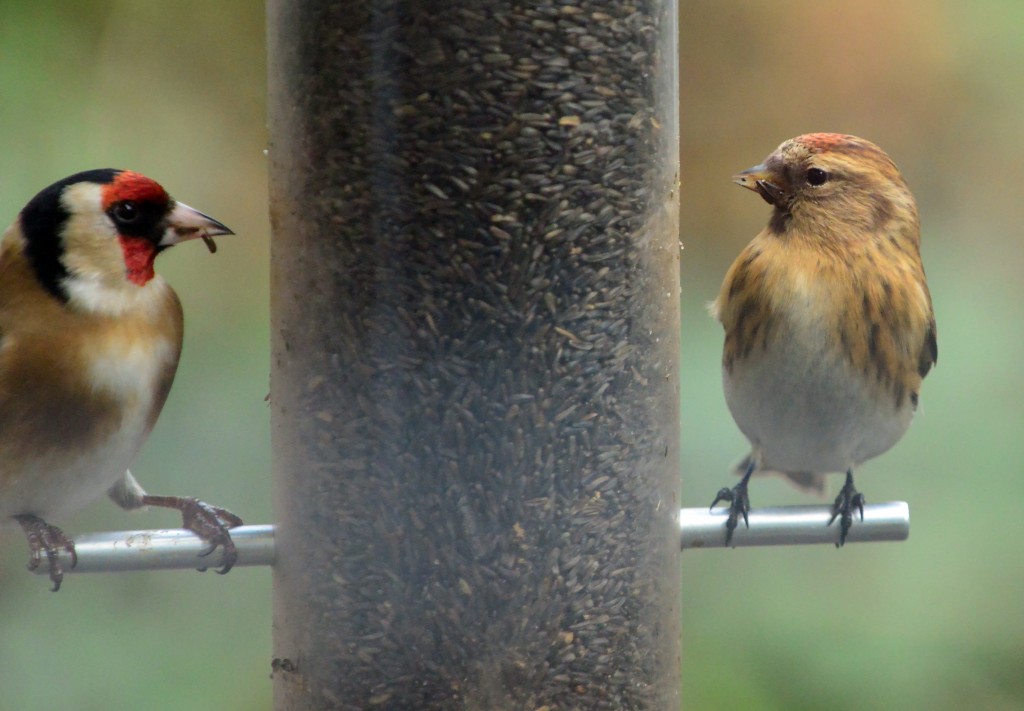Spring tides dictate wildfowl numbers and species on the reserve

Feb 3: weekly Wildlife Sightings column for Observer series of newspapers.
SPRING TIDES have pushed the Arun River over its banks in 14 places along the high ditch that borders the back WWT Arundel Wetland Centre reserve since last Friday. As the water levels have crept up, numbers of gadwall have dropped. Mid week we had 80+ gadwall at the Ramsar hide but by Sunday there were only 20. The deeper water puts these dabbling ducks off. Strangely, the number of wigeon on the reserve has increased. They are dabblers who also graze on grass - in short supply on the reserve at the moment. I think the flooding must be worse further up the Arun valley, pushing the wigeon along to us. They will likely continue to move through and out onto the coast.
I spotted a lone female lesser red poll on the bird feeder outside our office window on Sunday. This tiny finch was sharing the Niger seed feeder to the annoyance of a goldfinch much larger than she. Lesser red poll often dangle upside down on small twigs, feeding on alder or birch trees but they will visit bird feeders. This year we haven’t had the number of redpoll, fieldfare and red wing we usually see. The milder winter hasn’t been cold enough to push them down from Scotland and the north and northeast of England.
Most snipe have moved back deeper in the reedbed as the shallow edges disappear near the hides. The 22 snipe spotted at the Scrape hide on Saturday had dwindled to 8 by Sunday. Cormorants love the deeper water and can be seen from the hides and even on the World Wildfowl exhibit pond where the water is very deep now.
Eight lapwing remain on the Wet Grassland between Ramsar and Lapwing hides. Lapwing flocks start to breakup around now and head for their breeding grounds. I think these eight are the birds that bred here last year. The lapwings are usually declaring territory by now, displaying over bare ground with sparse vegetation where they eventually make a shallow scrape for their eggs. They have not started making their display flights yet, delayed by the rising and falling water levels. A male lapwing was scurrying about on the ground along the back of Arun Riverlife on Sunday. Maybe he is considering a move onto this newly revamped habitat.
